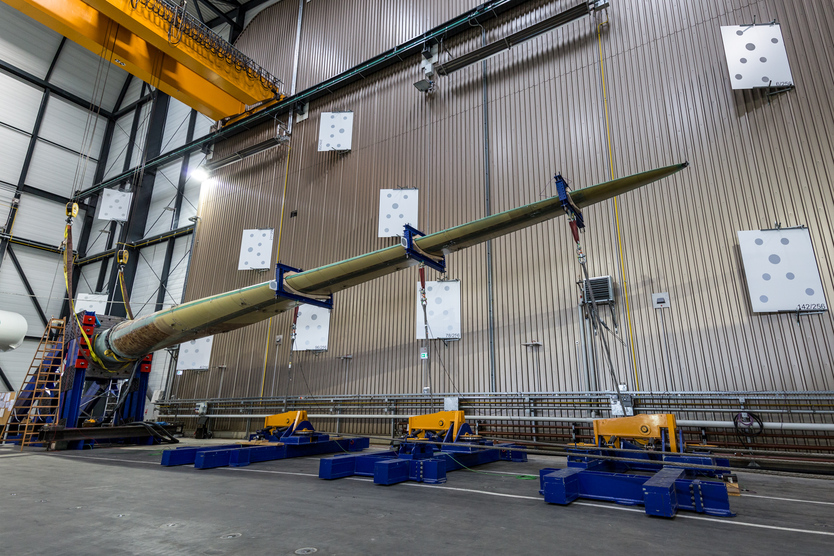
The blade is subjected to extreme loads in testing.
© Fraunhofer IWES
As part of the “SmartBlades2” project, the first rotor blade with flexural torsion coupling (FTC) was successfully tested: the new generation of rotor blade was able to withstand extreme artificial wind gusts in the laboratory, confirming the success of the researchers who had developed the design during the previous project (“SmartBlades1”).
Following further tests, three structurally identical examples of this rotor blade will be produced in the spring of 2018, and will be transported to the US for further testing at a facility in the National Renewable Energy Laboratory (NREL). After a test phase during the winter of 2018/2019, there will be a detailed validation phase through to the end of the project in November 2019.
The advantage of FTC technology is that it relieves the burden on the rotor blade structure. The blade, which is lighter compared to standard rotor blades, dynamically adjusts to the changing gusts and increases the rotor diameter, for example when mounted onto existing turbines. Due to the increase in “wind harvest”, higher yields can be obtained. As part of the “SmartBlades2” project, a study will be conducted to find out how the new technology can also be applied to very large rotor blades, for which standard blade adjustment systems have until now reacted too slowly to changing gusts.
The project is being conducted by the research institutes DLR, ForWind and the Fraunhofer Institute for Wind Energy Systems (IWES) together with six partners from the industrial sector (GE Global Research, Henkel, Nordex Energy, Senvion, SSB Wind Systems, Suzlon Energy and WRD Wobben Research and Development) and is being funded by the Federal Ministry for Economic Affairs and Energy (BMWi) with a total of 15.4 million euros.


